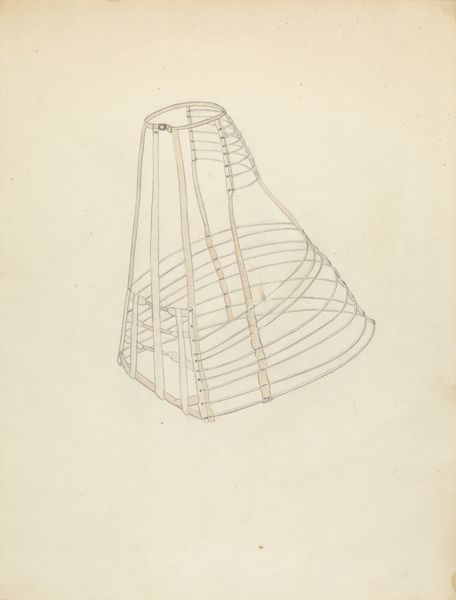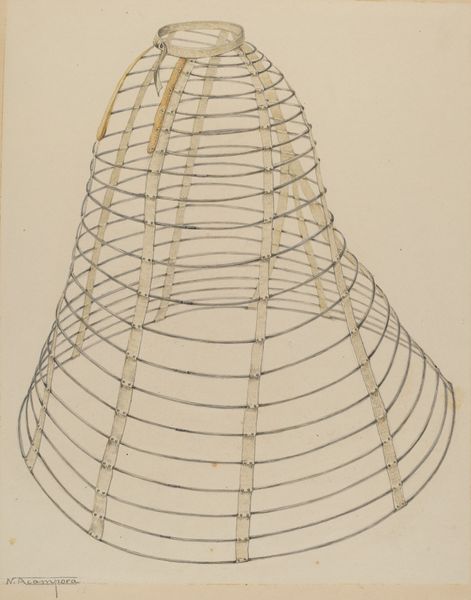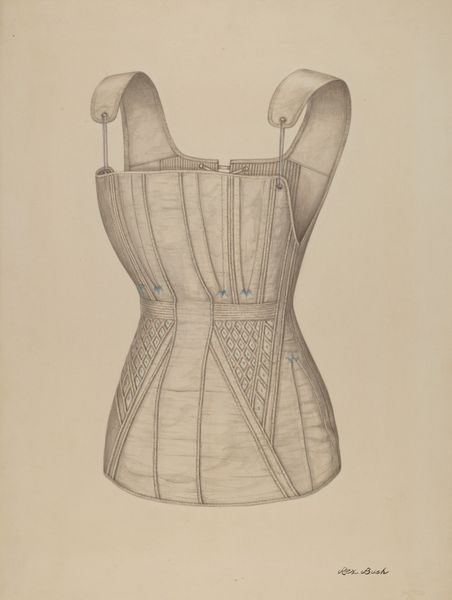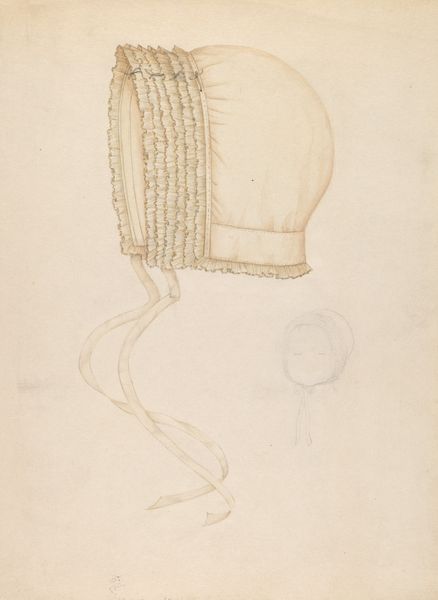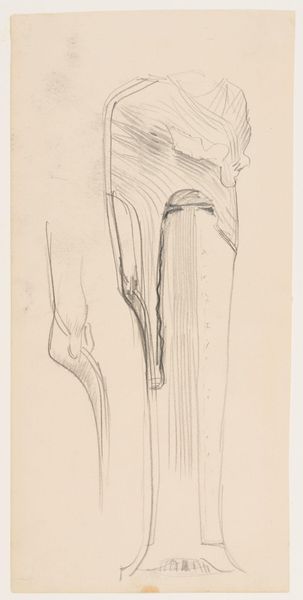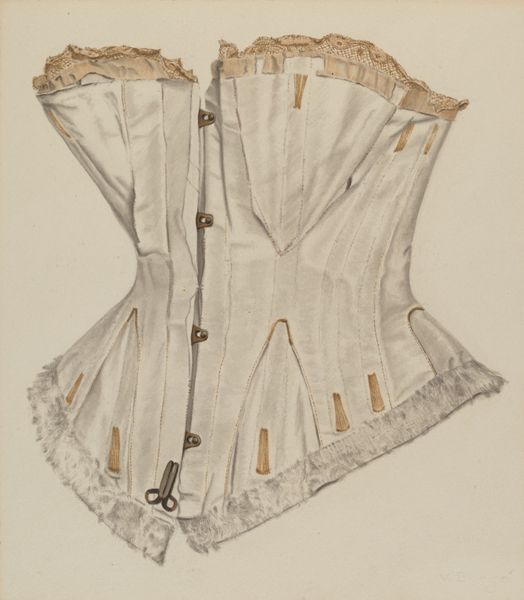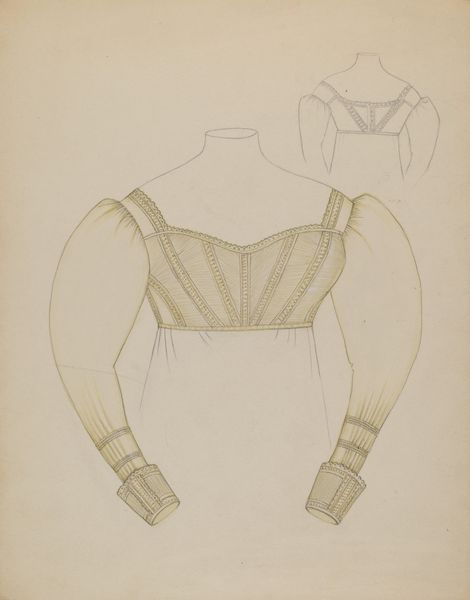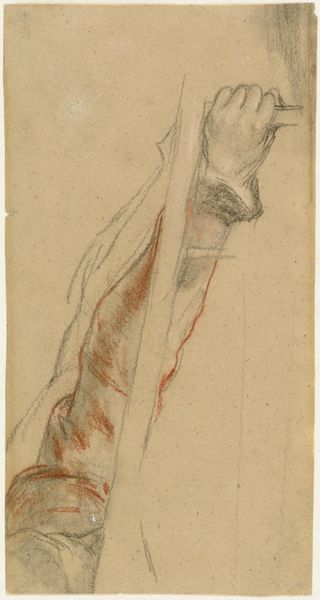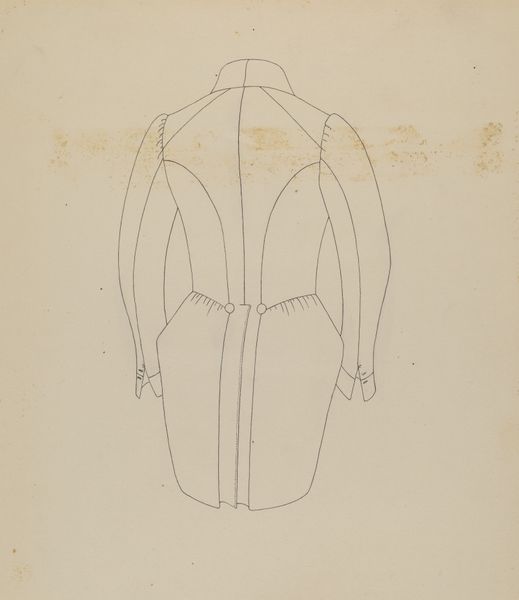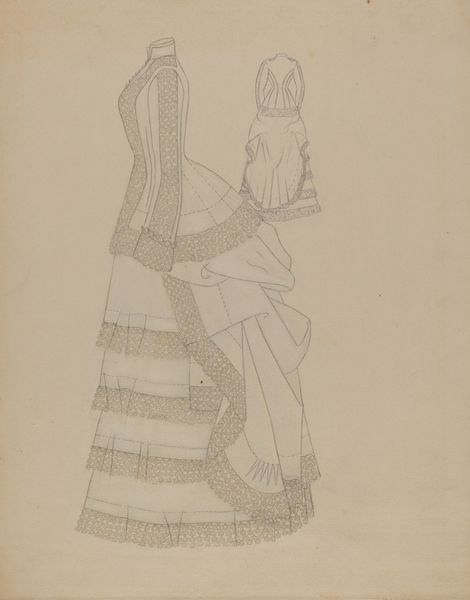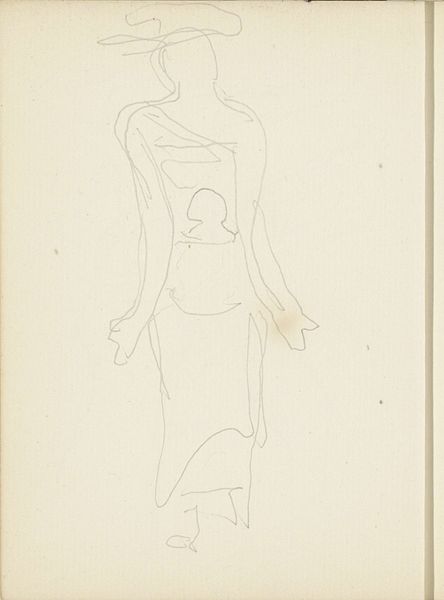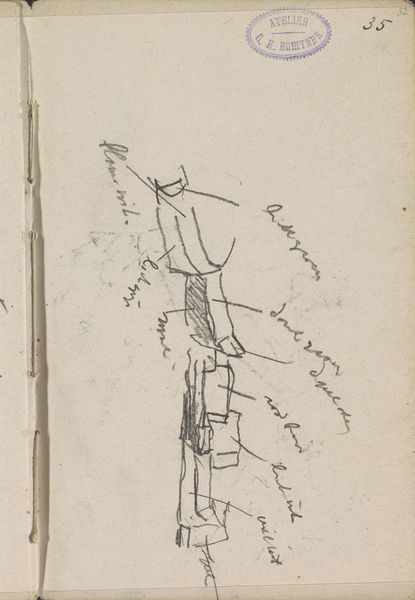
drawing, pencil
#
fashion design
#
drawing
#
underwear fashion design
#
light pencil work
#
fashion mockup
#
personal sketchbook
#
historical fashion
#
geometric
#
traditional dress
#
pencil
#
fashion sketch
#
clothing design
#
bridal fashion
Dimensions: overall: 29 x 22.6 cm (11 7/16 x 8 7/8 in.)
Copyright: National Gallery of Art: CC0 1.0
Curator: Here we have Esther Hansen's drawing "Hoop Skirt," dating from around 1937, rendered in delicate pencil strokes. What is your initial impression? Editor: The lightness of the pencilwork gives it an ethereal quality, almost like a ghost of fashion. It's like glimpsing the infrastructure of a bygone era, a silent monument to constricted movement. Curator: Indeed. Hansen’s sketches often explored the hidden architecture of fashion. The hoop skirt, of course, rigidly defined the wearer’s silhouette. Considering prevailing social constraints for women, how might this structure have both confined and empowered the wearer? Editor: The hoop skirt carries potent symbolic baggage. Consider its geometric precision: circles upon circles designed to mold the female form into a desired shape. We can analyze this with certain mythic symbols that have been employed to evoke status. Curator: The restrictive aspect cannot be ignored. The rigid, cage-like construction arguably represents the physical manifestation of societal expectations imposed on women at the time. The way bodies were literally reshaped by fashion reflects larger societal power dynamics. Editor: I see the artistry too, a craft and skill handed down. Note the meticulous rendering of each rib, and how they collectively generate the archetypal feminine curve. Think too of fairy tales and formal court dress; these visual vocabularies convey layers of social information. It also is visually evocative of architectural structures. Curator: It’s a fascinating tension, isn’t it? A study in contrasts. I am reminded of Laura Mulvey's notion of the female image being often presented for the male gaze, constructed and constrained. And the very structure of this undergarment demands the need for layers of dresses overtop, completely hiding this laboriously crafted skeleton. Editor: Absolutely. Perhaps it is in that careful artifice, concealed from view, where true agency lies. The circles have a hypnotic quality and one almost finds it dizzying when contemplating that for many generations this cage symbolized grace and charm. Curator: Looking closer, this seemingly simple drawing unlocks broader conversations about the performance of gender, the politics of dress, and the invisible labor embedded within fashion. Editor: Agreed, it's remarkable how much resonance a single object can contain. The cultural echoes radiating from a simple pencil sketch.
Comments
No comments
Be the first to comment and join the conversation on the ultimate creative platform.
